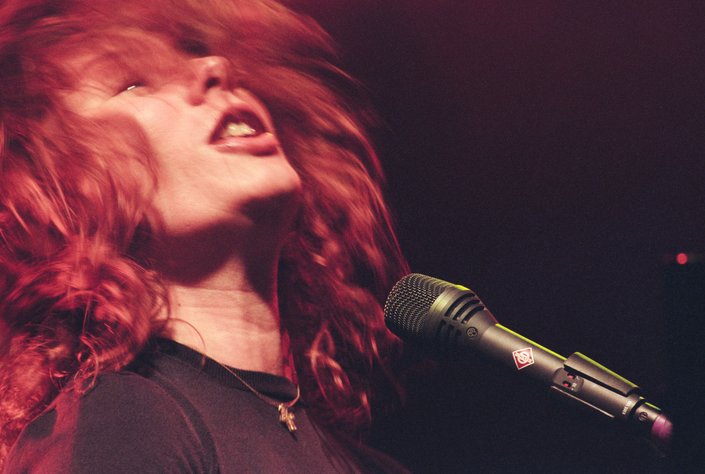A two-disc collection of new and live material, Tori Amos’ fifth album, To Venus And Back, began its orbit unexpectedly. On the eve of the millennium, Amos was ready for a holiday after years of relentless recording and touring since her seismic solo debut, Little Earthquakes, came out in 1992. “I was playing clubs since I was 13,” she told talk show host Charlie Rose. “[Touring] is part of what makes me up. My soup.” The plan was to release a live album and a disc of rarities and B-sides, then take a break at her beach house for the summer. But the muses had other ideas. Amos ended up instead with an album of 11 new songs, as well as a disc featuring the best live performances from her recent Plugged Tour for 1998’s from the choirgirl hotel album.
Listen to ‘To Venus And Back’ here.
“The songs said, ‘We’re from Venus. Sit down.’”
As Amos tells it, the title for the new album arrived before the songs, while she enjoyed “a really good bottle of Corton-Charlemagne” with a couple of pals. She revealed to VH1: “[My friend] Natalie was the one who looked at me and said, ‘You’d go to Venus and back if you could.’ And I said, ‘Wherever that is.’ Of course, we know about the planet… but there’s also the mythology of Venus, which is the feminine. So it just came to me.” Once she had a title, “the songs started to show up and say, ‘We’re from Venus. Sit down.’”
“This is the fastest one we’ve ever done,” Amos told Wall Of Sound of the album’s recording sessions. “Sometimes it just takes you longer to do something; you can’t hear it or see it, and you’re kind of half-present. But… she was so seductive none of us could sleep – none of us wanted to. It was like some Dionysian frenzy. We didn’t want to stop.”
“Divide and conquer a person with themselves: that’s control”
Bookended by its two most memorable – and starkly contrasting – singles, Bliss and 1000 Oceans, To Venus And Back is a gloriously spacey trip that sees the artist continue the exploration of electronica she’d begun with from the choirgirl hotel. “Instead of ‘Father, who art in heaven’ it’s, ‘Father I killed my monkey,’” Amos said to Rose of the iconic line that opens both Bliss and the album as a whole, “because my father [was a] Methodist minister, my grandparents [were] Church Of God ministers.”




